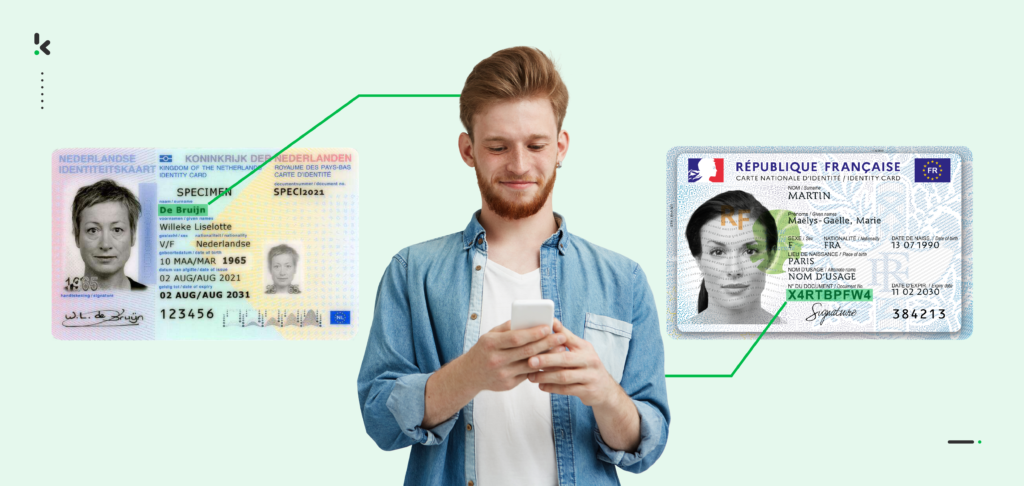

Synthetic identity theft is a type of identity fraud that combines real and fake personal information to create a new identity. The emerging new or synthetic identity has enough real information to seem credible, allowing it to be used to open fake accounts, make fraudulent purchases, and defraud financial institutions, among others. And the number of synthetic fraud cases is rapidly growing.
Synthetic identity fraud is projected to cost businesses nearly $2.5 billion in 2022, and research suggests that the number could double to nearly $5 billion by 2024. With identity fraud as the largest criminal activity in the world, top-notch Identity Verification software is being developed to prevent this act from occurring.
Currently, the most promising way to combat synthetic identity fraud is through using sophisticated Identity Verification software equipped with AI technologies; that verify ID documents and people through face recognition.
In this article, we will dive into how synthetic identity fraud occurs, which impact it could have on your business, and the AI-powered ID Verification solution to prevent it from damaging your organization.
Let’s start!
How Does Identity Theft Occur?
Identity theft is the crime of obtaining another person’s personal or financial information to use their identity to commit fraud, such as making unauthorized transactions or purchases. Identity theft is committed in many ways and its victims are typically left with damage to their credit, finances, and reputation. But how does it happen?
Identity theft occurs when someone steals personal information such as a Social Security Number, bank account number, or credit card information.
Some identity fraudsters search into trash deposits, looking for credit card or bank account statements. However, more sophisticated methods such as hacking or phishing are increasingly being used by identity fraudsters to obtain people’s personal information to commit identity fraud.
To find such information, they may search the hard drives of stolen computers, hack into computers or computer networks, access computer-based public records, use information-gathering malware to infect computers or use deceptive emails or text messages.
Once identity thieves have the information they are looking for, they can use the personal information, or create a fake modified version of it to commit identity fraud. This is also known as synthetic identity theft.
Methods of Synthetic Identity Theft
Generally speaking, there are two methods used by fraudsters when creating synthetic identities:
- Manufactured synthetic fraud
- Manipulated synthetic fraud
Let’s have a look at each of them in detail below.
Manufactured synthetic fraud
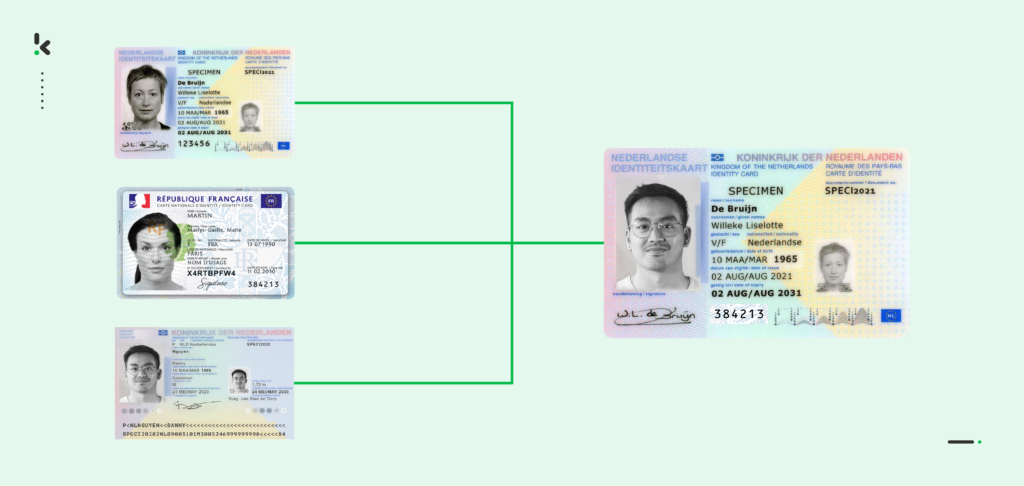

Manufactured synthetic identities originate from valid pieces of data that are assembled from multiple identities and then stitched together. For example, a fake identity is created after one person’s social security number is paired with another person’s address and a third person’s name.
Although this method is still being used today, fraudsters build these identities using invalid information instead. In the USA, for example, fraudsters create random social security numbers using the same structure as the Social Security Administration uses to issue social security numbers to genuine citizens.
Then, fraudsters add Personal Identifiable Information (PII) that doesn’t belong to any citizen. Criminals switched to using this technique as this form of synthetic ID fraud is much more difficult to detect.
Manipulated Synthetic Fraud
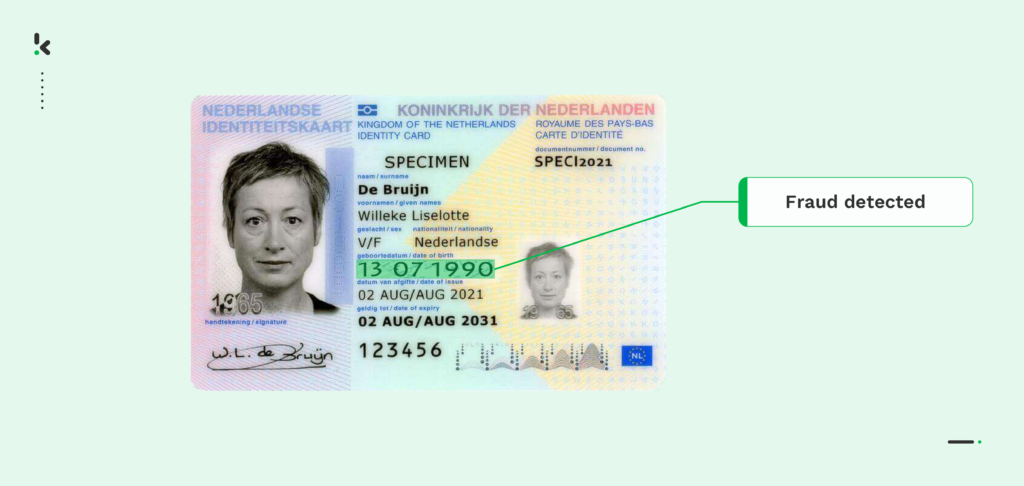

Manipulated synthetic identities, on the other hand, are generated based on real identities. In these instances, the change is done to only one specific identity document. For instance, the social security number or personally identifiable information is altered on a real ID card.
Individuals often use a manipulated identity to hide their credit history and gain access to a new credit record. For example, someone with a bad credit history may create a fictitious identity in order to be approved for mortgage applications, loans, or credit services.
Now that we know how fraudsters create synthetic identities, let’s have a look at the potential impact it can have on your business.
What is the Impact of Synthetic Identity Theft on Businesses?
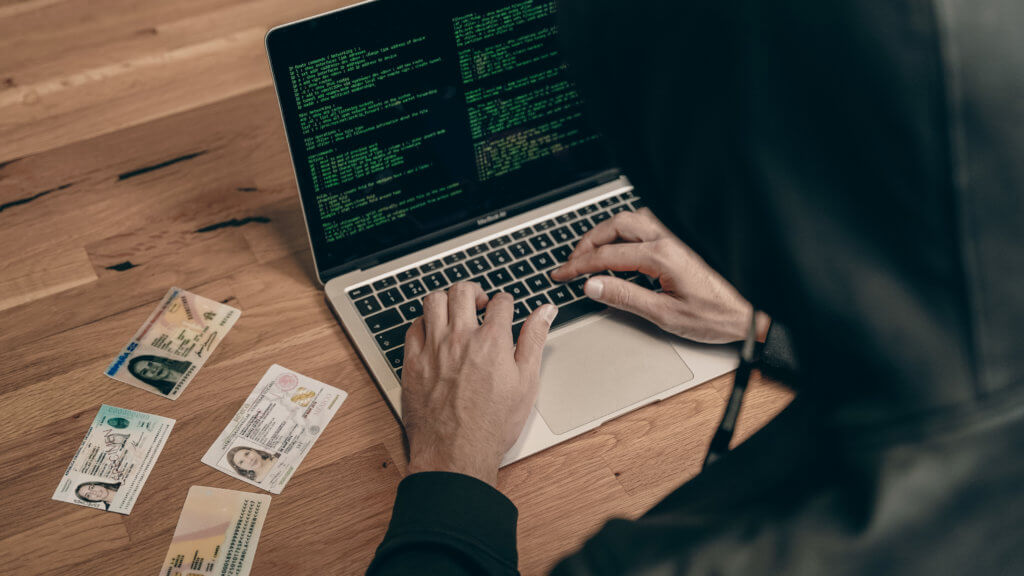

Synthetic identity theft is a growing threat, costing businesses billions of dollars and countless hours spent chasing down people who don’t even exist. Given the scale of data breaches, compromised Personal Identifiable Information, and ease of access to the dark web, it’s no longer enough to rely on social security numbers and credit bureaus alone.
Next to that, businesses suffer from the following challenges:
- Traditional tools are not fraudster-proof anymore: Tools that are meant to help reduce identity fraud, aren’t able to catch synthetic identity fraud. Criminals are always looking for new ways to commit fraud, and not all organizations are keeping up with them.
- It’s a significant problem for the financial sector: Synthetic fraud is incredibly dangerous and is a major problem for the financial industry. Unlike third-party fraud, where an entire identity is stolen and used to defraud enterprises and victims, synthetic fraud frequently has no specific victim. Without a specific victim, it becomes challenging for a business to detect and stop fraud from taking place.
- The victim is the business: If the original owners of the ID documents are not aware of fraud, there’s also nobody to alert the organization that fraudulent activity is taking place. Due to this, a fraudster who successfully opens an account with a synthetic identity can keep that account open for months or even years. While doing so, they can make payments and increase the amount of credit available, max out the credit available to them, and then disappear without a trace.
On top of these challenges, customers who are victims of identity theft will realize that their data is not safe. This can lead to reputational loss and a lack of trust in the company.
But, what can businesses do to conduct a more rigorous onboarding that can identify potential cases of synthetic identity fraud? Let’s have a look at your potential solution.
How to Prevent Synthetic Identity Theft with Klippa?
In today’s regulated world, businesses can no longer afford to operate without a secure customer onboarding solution that is smart enough to prevent synthetic identity thefts. This is exactly where Klippa comes into play.
With Klippa’s automated Identity Verification solution, you can make sure that your customer onboarding process is robust and secure. Our software uses OCR technology to extract data from identity documents, and AI to classify and verify data, detect document forgery, and analyze the facial biometrics of a person.
Whether your use case is to verify age, proof of address, or ID cards, our Identity Verification solution can easily be integrated into your workflow or applications via API or SDK.
The following features of our ID verification software are the reasons why we can support various use cases:
- Biometric verification
- ID verification
- Liveness checks
- NFC scanning
Biometric Verification
Biometric verification is the process of identifying individuals through unique biometric features like face recognition and fingerprints. This way, people can prove who they are in both a digital and physical environment.
For some systems, this is the only way people can get access to the desired service, device, or location.
Take the latest smartphones as an example. With the proper configuration of your biometric verification, no one else can access your smartphone.
Within our ID verification software, biometric information can be matched with an ID document, making sure it comes from the real owner of the ID, avoiding synthetic identity fraud.
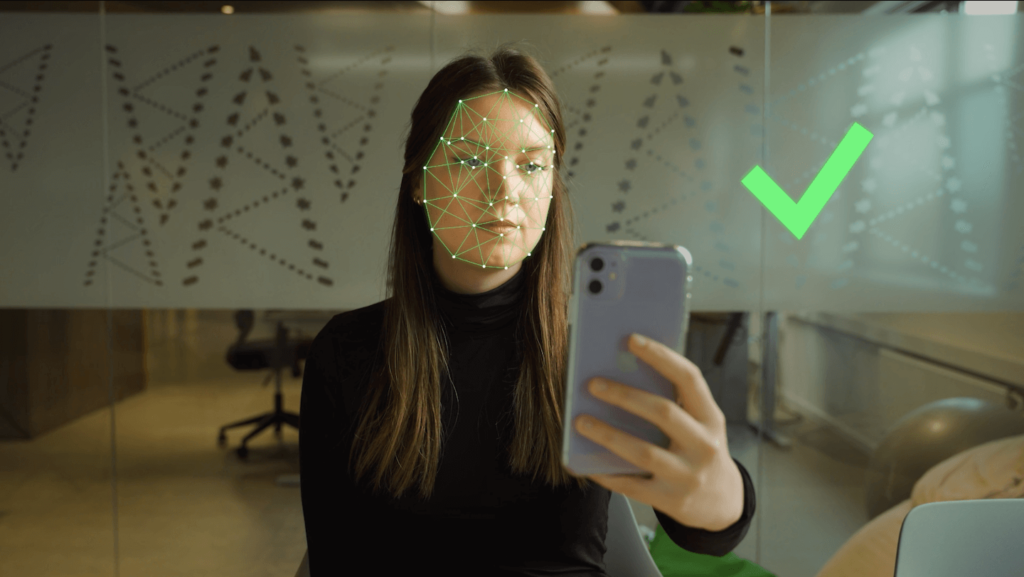

ID Verification
ID verification is a necessary procedure during onboarding, payment, booking, check-in, or check-out. There are multiple techniques involved in verifying an ID document’s authenticity. These include Photoshop detection using computer vision technology, metadata analysis, and performing third-party data verification checks.
Using an identity verification solution will reduce or avoid onboarding with synthetic ID documents.
Liveness Detection
Liveness checks are used to verify the person behind the camera, making sure that it is not someone with a printed picture of someone else’s face. Liveness checks work by capturing the movement of the person behind the camera or a number of selfies to validate the user and determine if it’s a real person or a passive fake in real-time.
This way, you can easily detect synthetic ID fraud and avoid spoofing that can be detrimental to your business.
NFC Scanning
The NFC identity verification technology is used to read encrypted data in the RFID chip of identity documents for user verification. With the help of a smartphone, NFC technology can be used to access a user’s data from identity documents and validate the document’s authenticity.
In the video below, you can see how the Identity Verification with NFC looks like:
Every feature of Klippa’s Identity Verification solution adds layers of security to your identity verification process and can help you prevent synthetic identity theft, ultimately enhancing your AML & KYC compliance.
Do you still have questions about our Identity Verification solution? Feel free to contact us or book a demo below to see how our solution works.
FAQ
Synthetic identity fraud occurs when fraudsters combine real and fake personal information to create a new, false identity. This fabricated identity is then used to open accounts, make purchases, or commit financial fraud.
Synthetic identity fraud can be detected using advanced identity verification tools. These solutions analyze ID documents, verify biometric data, and check for inconsistencies to identify fraudulent activity.
Warning signs include mismatched personal information, unusual account activity, and difficulties verifying identity during onboarding processes.
Fake identities are uncovered by using tools like biometric verification, liveness detection, and NFC technology to validate ID authenticity and confirm the legitimacy of the individual.
Businesses can prevent fraud by implementing identity verification software that uses AI and biometric technologies to secure customer onboarding and identify potential risks.